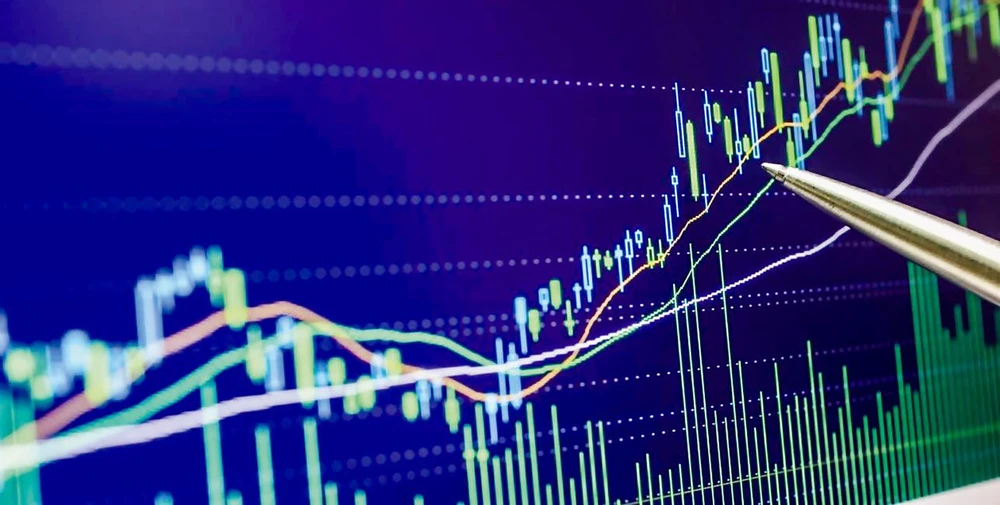
Its basic principles can help predict the stock market movements, cyclical fluctuation of each separate stock, and furthermore, it can also predict the ups and downs of the market in general.
Importance of DOW in the stock market
The father of the DOW theory was Charles Henry DOW, founder of ‘The Wall Street Journal’, a very popular financial publication that many readers subscribe to. Charles DOW was also one of the first finance experts who studied the stock market movements and invented Dow Jones Industrial Average in 1897. This DJ index has been popular up until now.
He developed a series of basic principles for understanding and analyzing the stock market behavior which was later known as the DOW theory, the groundwork for modern day financial technical analysis. The clearest application based on this theory was stock trading, gold trading, trading on currency pairs (FOREX), FOREX trading, and commodity trading.
One of six important principles in DOW theory was the study of hypothesis in stock market average index. This index reflects the economic status, the total value of supplement and demand through transactions in the market and the total volume of transactions of listed stocks. The DJ index initially represented 11 stocks of large enterprises at that time, belonging to nine railroad companies and two heavy industry companies.
Charles DOW affirmed the movements of the initial DJ index reflecting the reality of the economy, and the status and business activities of the key industry fields at that time.
Primary, secondary and short-term market movements
Charles DOW stated, that the primary movement or major trend of the market may last from several months to several years. Meanwhile, the secondary one was a correction that may last from several weeks to a few months, also known as a bullish or bearish trend in the primary movement.
It is said to be an important principle, considered as essentially basic with reference to Elliott’s wave research theory as well as its further development. The short-term trend was recognized as a sideways movement before the market turned to the major trend or correction.
If we consider the major trend as strong high wave, the secondary movement would be the correction with continuous intermediate short waves, and the short-term trend would be the small rippling waves before the start of the primary movement.
The Vietnamese stock market from the beginning of 2016 to April 2018 showed that the major trend was considered as strong high wave. The period from July to December 2016 was called an intermediate stage, a correction in major trend. The fluctuations in 2017 in the market in January, March, July and October were short-term trends, small rippling waves within the big ones.
Three stages of major trends
Stage 1: Accumulation
At this stage, the market may create a bottom or will be for a long correction. The information about the market is neither positive or negative. Small investors often feel depressed and then gradually sell their stocks. Meanwhile, others are buying the stocks, partly because they have a lot of capital, or partly because their views are further towards potentially positive signs in the market.
Stage 2: Big move (public participation)
This stage breaks up the accumulation foundation to go up. After a long accumulation stage, there are more positive signs in the market. Investors start to buy more and more volume of stocks, pushing up the stock prices. Those who previously missed this chance are not willing to stand outside this situation anymore. They start pouring more money into a large number of stocks. Those who have never invested in stocks are uncontrollably attracted by massive profits from the market and also participate in this trend. When the crowds of investors begin to become greedy for profits, the purchasing increases sharply, as well as the general market and stock prices also increase rapidly.
Stage 3: Excess
At this stage, when investors’ confidence with excessive valuation is extraordinarily high, most of them and the media seem to be totally fascinated and often appreciate the positive movements of the market. The news released on all communications is good, which stimulates investors to pour their money into the stocks. Excessive sale and purchase of stocks and abused financial leverage makes them fall into an unconscious state without recognizing the true value of the stocks. At this time, many stock prices increase so rapidly, almost excessively, in the market that it could collapse immediately at any time, to use a technical term called ‘exhausted gaps’.
Average index of synchronous fluctuation
Vietnam stock indexes like VN Index, VN30, HNX Index, UPCoM Index are fluctuating in accordance with the theory that they must synchronize and consolidate each other. In each bullish and bearish or stable session, these indexes must have a tendency to fluctuate similarly. In most cases, the increase or decrease of the VN30 causes an impact on bullish and bearish movements of other average indexes in the market.
Studying the simultaneous movements and consolidation cases of the average indexes helps most investors understand the movements or forecast relatively the various happenings of the indexes if the VN30 or VN Index shows signs of big increase or reverses direction.
The major trend sharply increases because of the strong development of exchange volume. We can observe the happening of the general market or the stocks before the strong bullish stage. This is confirmed by the exchange session and sudden increase in liquidity.
Signs of reversing the direction
Charles Dow assumed that suddenly reversing the major trend was unlikely to happen. It had to test and challenge investors’ confidence many times (a sudden reversal usually occurs in small waves due to its randomness; for secondary waves, it was possible but fewer).
In this case, many investors following Dow theory often find it difficult to identify the reversal of the main trends, or only a correction in the movement. Therefore, the investors should observe carefully by standing outside the market and waiting patiently until the market apparently shows the trend and then participate in it.
In fact, VN Index has showed that the increase and correction last for a long time from the beginning of the year until now, from 900-940 and 1,000 points. VN Index has risen and adjusted around the vicinity of 1,000 points many times and has not shown excessive signs yet. Therefore, the fact that short-term traders sell their stocks when the VN Index rises to reach 1,000 points or buy their stocks when the index drops to 970 points is easily explained.
The general trend of the market is still in the intermediate stage. At this time, adjusting the stable line and passing the area of 1,000-1,100 points, even 1,200 points in the coming years will confirm the market into a new tendency. This will also attract the attention of many investors, as well as large cash flows to the market.




















